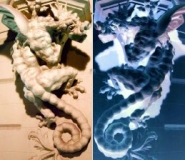Speaker
Dr
Sergey Sukhoruchkin
(Petersburg Nuclear Physics Institute)
Description
The radiative correction (of the type g/2pi) is one of the commonly used methods of a comparison of the effects
with very different scales [1]. For example, Bernstein marked the closeness of the QED correction (alpha/pi)
to the parameter of CP-nonconservation in kaon decay [2]. There is an exact coincidence between QED
radiative correction alpha/2pi=1.159 10-3 with the ratio between well-known Standard Model parameters
m-mu/MZ=1.159 10-3 [3], while the lepton ratio m-mu/m-e=206.77 become integer 207.01 after small QED
correction for the electron rest mass. We follow Nambu suggestion [4] that empirical relations in particle
masses could be useful for the SM-development, and consider additional empirical relations in well-known
particle masses, including top-quark and tau-lepton. Indirect confirmation of these tuning effects in
particle masses was found in the corresponding tuning effects in the nuclear data [5].
References:
[1] I.T.Dyatlov, Phys. Rev. D 45 (1992) 1636.
[2] J.Bernstein, Elementary Particles and their Currents, Stevens In. publ., 1968.
[3] S.I.Sukhoruchkin, Nucl. Phys. A, 782 (2007) 37.
[4] Y.Nambu, Nucl. Phys. A, 629, 3c (1998).
[5] S.I.Sukhoruchkin, "Fundamental origin of nuclear tuning effects",
Proc. Int. Conf. Nucl. Data Sci. Technol,. Nice, 2007, http://nd2007.edpsciences.org.
Primary author
Dr
Sergey Sukhoruchkin
(Petersburg Nuclear Physics Institute)




